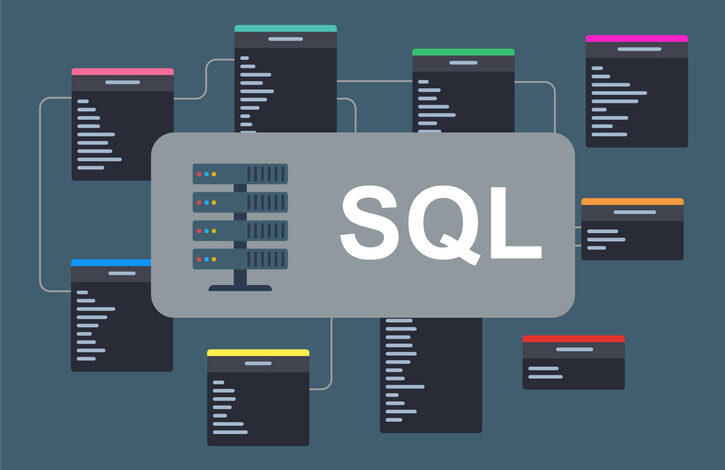Mastering the COALESCE Function in SQL

When diving into SQL, one quickly encounters the concept of NULL values — placeholders for undefined or missing data. While NULLs are essential for database integrity, they can also introduce complexity into data retrieval and manipulation. This is where SQL’s COALESCE function comes into play, offering a streamlined solution for dealing with these enigmatic NULLs.
What is COALESCE?
COALESCE is a versatile SQL function that returns the first non-NULL value from a list of arguments. It’s a tool designed to simplify the handling of NULL values in SQL queries, ensuring that operations continue smoothly even when data is incomplete or absent. Think of COALESCE as a safety net, catching the potential fall of operations that might otherwise stumble over NULL values.
The Importance of Handling NULL Values
In SQL, NULL values can be both a blessing and a curse. They are indispensable for representing the absence of data, but without proper handling, they can lead to unexpected results or errors in SQL operations. The COALESCE function is one of several SQL features that provide control over how NULL values affect the outcome of your queries.
Understanding NULL Values in SQL
Before we delve into the intricacies of the COALESCE function, it’s crucial to grasp the concept of NULL values in SQL. NULL is a marker used in SQL to indicate that a data value does not exist in the database. It’s a state of ‘unknown’ or ‘missing’ rather than a zero or a space. This distinction is important because it affects how SQL queries are written and how they behave when encountering such values.
The Nature of NULL in SQL
In SQL, NULL is not equivalent to an empty string or a numerical zero. It is a non-value that signifies the absence of any data. This means that any operation involving NULL generally yields another NULL, following the logic that an unknown value added to, subtracted from, or compared with another value remains unknown.
Challenges Posed by NULL Values
NULL values can lead to challenges in database operations, particularly when it comes to aggregating data, performing joins, or executing conditional logic. For instance, when summing up a column of numbers, any NULL values are treated as if they don’t exist, potentially skewing the sum. Similarly, when joining tables, if a join condition involves a NULL value, it will not match any value, including another NULL, because NULLs are not considered equal to anything, not even to other NULLs.
SQL Functions for Handling NULLs
SQL provides several functions to handle NULL values effectively. The COALESCE function is one such tool, designed to manage NULLs by returning the first non-NULL value from a list of columns or expressions. Other functions like ISNULL, NVL, and IFNULL also offer ways to cope with NULLs, each with its own syntax and specific use cases. Understanding these functions is key to writing accurate and reliable SQL queries.
The Basics of COALESCE
At its core, the COALESCE function is SQL’s answer to handling the uncertainty introduced by NULL values. It is a scalar function that returns the first non-NULL value in a list of arguments. Understanding how to use COALESCE effectively begins with a clear grasp of its syntax and behavior.
Syntax of the COALESCE Function
The syntax for COALESCE is straightforward:
COALESCE(expression1, expression2, ..., expressionN)
The function evaluates each expression in the order they are listed and returns the first non-NULL value it encounters. If all the expressions are evaluated to NULL, then COALESCE returns NULL.
How COALESCE Processes a List of Arguments
When COALESCE is called, it starts evaluating the expressions from left to right. The evaluation stops as soon as a non-NULL value is found, and that value is returned as the result of the function. This operation is particularly useful in scenarios where you want to provide a fallback value for potentially NULL columns or expressions, ensuring that the query returns a meaningful result rather than a NULL.
Differences Between COALESCE and Similar Functions
While COALESCE might seem similar to other NULL-handling functions like ISNULL or NVL, there are key differences. For instance, ISNULL, which is specific to SQL Server, only allows for two arguments and will return the second if the first is NULL. NVL, on the other hand, is Oracle-specific and also operates on two arguments. COALESCE is part of the SQL standard and is more flexible, allowing for two or more arguments, making it a more versatile choice for handling NULL values across different SQL databases. Understanding these distinctions is crucial for writing cross-platform SQL queries and for utilizing the full potential of COALESCE.
Practical Examples of COALESCE in Action
To truly appreciate the utility of the COALESCE function, it’s helpful to see it applied in real-world SQL queries. Through practical examples, we can explore how COALESCE can be used to streamline data retrieval and ensure that the results of a query are meaningful and user-friendly, even when dealing with incomplete data sets.
Simple Examples with Explanations
Consider a database of customer information where the email address of some customers might be missing. Without COALESCE, a query to retrieve contact information might return NULL values, which aren’t helpful for communication purposes. With COALESCE, you can provide an alternative contact method:
SELECT COALESCE(email, phone, 'No Contact Information') AS ContactInfo FROM Customers;
In this query, COALESCE checks each customer’s email and phone number; if the email is NULL, it moves on to the phone number. If both are NULL, it returns the string ‘No Contact Information’.
COALESCE with Different Data Types
COALESCE can handle various data types, from strings to numbers to dates. For instance, in a product inventory database, you might want to show the last restock date, but if the product has never been restocked, you’d rather show the initial stock date:
SELECT productName, COALESCE(lastRestockDate, initialStockDate) AS StockDate FROM Inventory;
This query ensures that the StockDate column always has a meaningful date value, improving the clarity of the inventory data presented.
Nested COALESCE Functions
For more complex decision-making, COALESCE functions can be nested within one another. This allows for multiple fallbacks. For example, in a table tracking project deadlines, you might have planned, revised, and final deadlines:
SELECT projectName, COALESCE(finalDeadline, COALESCE(revisedDeadline, plannedDeadline)) AS EffectiveDeadline FROM Projects;
This nested COALESCE ensures that the query returns the most relevant deadline available for each project.
These examples demonstrate the flexibility and practicality of the COALESCE function in SQL. By providing fallback values, COALESCE ensures that queries return usable data instead of NULLs, which can be critical for decision-making processes and user interfaces.
Advanced Use Cases for COALESCE
While the COALESCE function is straightforward in its basic form, its true power is revealed when applied to more complex SQL queries and database operations. Advanced use cases of COALESCE demonstrate its versatility and its capability to handle intricate data retrieval scenarios, ensuring robustness and accuracy in the results.
Dynamic SQL Queries with COALESCE
Dynamic SQL queries, which are constructed on the fly and executed at runtime, can greatly benefit from the COALESCE function. For instance, when building a query string that involves optional search parameters, COALESCE can be used to handle potential NULL values that might otherwise lead to incorrect or incomplete results:
DECLARE @SearchTerm VARCHAR(100) = NULL; DECLARE @SQLQuery AS NVARCHAR(1000); SET @SQLQuery = 'SELECT * FROM Products WHERE ProductName LIKE ''%' + COALESCE(@SearchTerm, ProductName) + '%'''; EXEC sp_executesql @SQLQuery;
In this example, if @SearchTerm is NULL, COALESCE ensures that the query searches for products with any ProductName instead of failing or returning no results.
Using COALESCE in JOIN Operations
COALESCE can also be a valuable tool when performing JOIN operations, particularly when you need to account for NULL values in columns that are used for matching records in different tables. It can help to create more comprehensive and inclusive JOIN results:
SELECT a.OrderID, a.CustomerID, COALESCE(b.ShippingAddress, a.BillingAddress) AS Address FROM Orders a LEFT JOIN ShippingDetails b ON a.OrderID = b.OrderID;
Here, COALESCE is used to select a shipping address if available; otherwise, it falls back to the billing address, ensuring that an address is always provided.
COALESCE in Stored Procedures and Functions
In stored procedures and user-defined functions, COALESCE can be used to set default values for optional parameters or to manage return values when dealing with NULLs:
CREATE PROCEDURE GetCustomerDetails @CustomerID INT, @DefaultPhone VARCHAR(15) = 'Not Provided' AS BEGIN SELECT CustomerName, COALESCE(PhoneNumber, @DefaultPhone) AS PhoneContact FROM Customers WHERE CustomerID = @CustomerID; END;
This stored procedure uses COALESCE to return a default phone contact message when a customer’s phone number is not available.
These advanced scenarios illustrate the adaptability of COALESCE in various SQL constructs, from dynamic queries to complex joins, and in the creation of robust stored procedures. By leveraging COALESCE, SQL professionals can ensure that their database operations are not only NULL-safe but also optimized for performance and reliability.
COALESCE vs. Other NULL-Handling Functions
While COALESCE is a powerful tool for dealing with NULL values, it’s one of several functions available in SQL for this purpose. Understanding when and why to use COALESCE over its counterparts is key to writing efficient and effective SQL code.
Performance Considerations
One of the primary considerations when choosing between COALESCE and other functions like ISNULL or NVL is performance. COALESCE is ANSI SQL standard and typically optimized for performance across different database systems. However, in some specific cases, functions like ISNULL in SQL Server may perform slightly faster since they are designed for a specific database engine and have less overhead.
Situational Advantages of COALESCE
COALESCE offers a significant advantage in its flexibility—it can take multiple arguments and return the first non-NULL value. This is not the case with ISNULL or NVL, which are limited to two arguments. This makes COALESCE a more versatile choice for complex queries where multiple potential NULL values need to be considered.
For example, when dealing with multiple levels of fallback for a display value, COALESCE can simplify the code:
SELECT COALESCE(employee.MiddleName, employee.FirstName, 'No Name Provided') FROM Employees;
In this query, COALESCE checks for a middle name first, then a first name, and finally defaults to a constant string if both are NULL.
When to Use COALESCE Over ISNULL or NVL
The decision to use COALESCE over ISNULL or NVL often comes down to the specific requirements of the query and the database system in use. COALESCE is the go-to function when working with multiple database platforms or when there is a need to evaluate more than two potential NULL values. It’s also the preferred choice when writing complex queries that may be ported to different SQL database systems in the future.
However, if you are working within a single database system and performance is a critical concern, it may be worth testing whether ISNULL or NVL offers any performance benefits over COALESCE for your specific use case.
Best Practices for Using COALESCE
Employing the COALESCE function in SQL queries can greatly enhance the handling of NULL values, but it’s important to follow best practices to ensure that its implementation is both effective and efficient. Adhering to these practices can prevent common pitfalls and help maintain the integrity of your data.
Ensuring Data Integrity When Using COALESCE
The primary goal of using COALESCE is to provide a default value in place of NULL, but it’s crucial to ensure that the substitute values make sense within the context of your data. For instance, when replacing a NULL date, providing a default date that could be misinterpreted as a valid value could lead to confusion or errors in data analysis. Always choose default values that are clearly distinguishable from legitimate data.
Avoiding Common Pitfalls and Mistakes
A common mistake when using COALESCE is not considering the data types of the arguments provided. All arguments should be of a type that is implicitly convertible to a common type, or else SQL will raise an error. For example, attempting to COALESCE a string and an integer without explicit conversion can cause issues.
Another pitfall is using COALESCE to handle NULLs without addressing the underlying reason why NULLs are present in the first place. While COALESCE is a useful band-aid, it’s also important to look at the data model and understand whether the presence of NULLs is due to data quality issues that need to be resolved at the source.
Tips for Writing Clean and Efficient SQL with COALESCE
To write clean and efficient SQL queries using COALESCE, consider the following tips:
- Use COALESCE to simplify your SQL logic, replacing multiple OR conditions that check for NULL values.
- When dealing with optional parameters in stored procedures, use COALESCE to provide default values, ensuring that the procedure can handle NULL inputs gracefully.
- In reporting and user-facing queries, use COALESCE to provide user-friendly messages instead of NULL, which can be confusing for end-users.
By following these best practices, you can leverage COALESCE to its full potential, writing SQL queries that are robust, maintainable, and clear in their intent.
Troubleshooting Common Issues with COALESCE
Even with a solid understanding of the COALESCE function, SQL developers may encounter issues that require troubleshooting. These can range from unexpected results to performance hiccups. Knowing how to address these common problems is an essential part of working with COALESCE effectively.
Debugging Unexpected Results
When a query with COALESCE doesn’t return the expected output, the first step is to verify the input data. Since COALESCE returns the first non-NULL value in its argument list, any unexpected NULLs in the data can lead to surprising results. It’s important to check whether the data contains NULLs where they shouldn’t be and to understand the data flow that leads to the COALESCE operation.
Handling Data Type Mismatches
COALESCE can only return a value that has a consistent data type. If the function is provided with a list of expressions of different data types, it may result in a type conversion error. To prevent this, ensure that all expressions within your COALESCE function can be implicitly converted to a common data type or use explicit CAST or CONVERT functions to manage the conversion.
Optimizing Queries with COALESCE for Better Performance
COALESCE can sometimes lead to performance issues, especially if it’s used within a WHERE clause or a JOIN condition, as it can prevent the query optimizer from using indexes effectively. To optimize the performance of queries using COALESCE, consider the following:
- Avoid using COALESCE on indexed columns in WHERE clauses if possible.
- If COALESCE is necessary in a WHERE clause, test whether using a CASE statement improves performance, as it sometimes can be more optimizer-friendly.
- When using COALESCE in JOIN conditions, be aware that it might cause a full table scan, which can be costly for large tables. It may be more efficient to restructure the query to avoid this.
By being mindful of these issues and knowing how to troubleshoot them, SQL developers can ensure that their use of COALESCE contributes to the efficiency and reliability of their database applications.
Conclusion
As we wrap up our exploration of the COALESCE function in SQL, it’s clear that this tool is invaluable for managing NULL values and ensuring that our queries are robust and reliable. We’ve seen how COALESCE can simplify SQL statements, provide fallback values, and help maintain data integrity, all while keeping our code clean and readable.
The Value of Mastering COALESCE
Mastering the COALESCE function is more than just learning the mechanics of a SQL feature—it’s about embracing a mindset that prioritizes data quality and query resilience. It’s a testament to the importance of writing SQL code that not only performs well but also handles the inherent uncertainties of data with grace.
Understanding how to handle NULL values effectively is a cornerstone of proficient SQL programming. The COALESCE function is a key part of that understanding, providing a straightforward and standardized way to deal with the absence of data. As SQL continues to evolve and as data grows in complexity and scale, the skills to navigate these challenges become ever more critical.
We encourage you to take what you’ve learned here and apply it to your own SQL queries. Experiment with COALESCE, push its boundaries, and observe how it can improve the quality and reliability of your data interactions.





